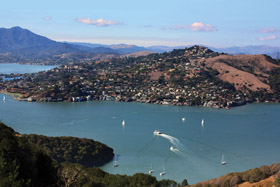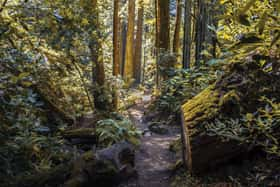
Marin County has big challenges. Occupying just 520.31 square miles on the Northern California coast, it boasts rolling hills and mountains, sandy beaches and pastoral lands, as well as 11 cities and towns, each with its own individual character. At the same time, it’s just a bridge away from San Francisco, making it a desirable place for people who work in the city but want to live in a more peaceful setting. With just 260,750 residents at last count, it’s one of the smallest and least populated of the Bay Area’s suburban counties, but its close proximity to a world-famous city makes its real estate some of the most coveted and expensive in the region. As a result, it’s attractive to developers as well as people seeking a small-town lifestyle, but the characteristics that make it appealing also make Marin a difficult place to build, because growth and homeowners’ values frequently clash.
Looking back
Marin has a long history of opposing development, dating back to the 1960s. In the prosperous years following World War II, new subdivisions, high-rise apartment buildings and shopping centers were the trend nationwide, and it seemed a natural course for Marin County, too. A new road was underway in preparation for the construction of Marincello, a city with a projected population of 35,000 on 2,100 acres in the Marin Headlands. West Marin was slated for urbanization as well. The path seemed set until a small group of Marin residents, concerned about the looming changes and understanding what the county was about to lose, set out to turn back the tide of development.
Their activism was controversial and divisive at first, but it gradually gained support and succeeded in stopping development in its tracks, leading the way to the establishment of the Point Reyes National Seashore and the Golden Gate National Recreation Area, preventing thousands of acres of potentially buildable land from ever being developed. The movement to preserve open space and the Marin Agricultural Land Trust’s (MALT) unique model to buy development easements from farm owners and keep their land for agricultural use in perpetuity added thousands of acres more. As a result, Marin doesn’t have much room for growth, and a host of voices weighs in on prospective developments, including community members, environmentalists, politician, planners and developers.
Neighborhood watch
Location is a big selling point in Marin County, so a 127-acre property in Strawberry Point, an incorporated area of Mill Valley adjacent to the Tiburon Peninsula that’s valued for its panoramic views of the bay and San Francisco, is prime real estate. The Golden Gate Baptist Theological Seminary purchased the property and opened its Strawberry campus on part of the hillside property in 1959, but it was more than 50 years before county planners received a proposal for development of the unused parcel. The project, known as Hart/Marin, didn’t meet muster because it had to conform to the requirements of Marin County’s 1984 Master Plan, which allowed 93 residential units, while the proposal was for 117 units with 74 sites for sale. With the prospect unlikely that the developer could come up with a plan that would meet its needs and also satisfy the county, the seminary made the decision to move to Southern California; in April 2014, the institution announced it had sold the Strawberry property to North Coast Land Holdings and would depart in 2016.
Neighbors who found the seminary’s plans troubling soon discovered even more reason to be concerned. The campus is zoned for educational use, so in addition to housing, the new owner plans to lease property to the Branson School, a private high school in Ross, creating a significantly different scenario. “The seminary was going to stay,” says Josh Sale, a spokesman for the Seminary Neighborhood Association, who observes that, because students lived on campus, it was largely a contained, live-work situation. With a local high school, however, people would be coming and going frequently, increasing traffic significantly on residential streets. “It may have very different impacts on the neighborhood,” he says.
Plans that North Coast Land Holdings filed with the county of Marin in October 2015 show Branson 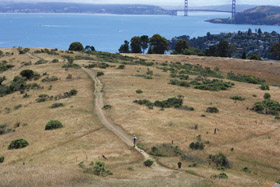 occupying 26 acres of the site. One of the school’s stated goals is to increase enrollment, which is currently capped at 320 students as a result of a voter initiative in Ross in 1978. “They want to get out from under the cap,” says Sale, who speculates that new athletic facilities, such as a swimming pool and/or sports fields, are possibilities. The prospect raises concerns about the noise of a public address system as well as additional traffic because the school would attract visiting teams. He points out that Strawberry only has two ways in and out, and all these scenarios would worsen existing traffic problems and affect not only Strawberry but also the neighboring communities of Mill Valley, Tiburon and Belvedere.
occupying 26 acres of the site. One of the school’s stated goals is to increase enrollment, which is currently capped at 320 students as a result of a voter initiative in Ross in 1978. “They want to get out from under the cap,” says Sale, who speculates that new athletic facilities, such as a swimming pool and/or sports fields, are possibilities. The prospect raises concerns about the noise of a public address system as well as additional traffic because the school would attract visiting teams. He points out that Strawberry only has two ways in and out, and all these scenarios would worsen existing traffic problems and affect not only Strawberry but also the neighboring communities of Mill Valley, Tiburon and Belvedere.
More than a year before the filing, Marin County Supervisor Kate Sears, representing District Three (which includes Strawberry), reached out to get the neighbors’ points of view and help them develop a vision. She formed a committee that met for an all-day meeting in September 2014 and held an open house for local residents. Prior to the meeting, the committee wrote and distributed a survey, which gave people a chance to think about what issues were important to them beforehand. The final committee was composed of Sears, 16 residents, a representative of the Marin County Development Agency and a facilitator. They used the information from the survey to create a vision that looked at the present and the future, and then considered how to get from here to there. The meeting found a substantial amount of consensus, but also some differences. Most important, it was inclusive.
“She really let the community take charge of the process,” says Sale, crediting Sears with listening and not having any agenda of her own. “The final report did a great job of capturing the concerns of the community.” He points out that North Coast Land Holdings has no obligation to consider the neighborhood vision in its plans, though he hopes it will, but participation in a community forum was valuable for the people who feel the impacts of development have certain expectations and need to be heard. “When people moved into Strawberry, it was with the knowledge that the seminary had well-defined limits on its use and development potential,” says Sale. “North Coast Land Holdings bought the site with these restrictions in place. They don’t simply go away now that new owners have arrived.”
The new plan calls for 304 homes. Two existing single-family homes and 11 of the seminary’s current 209 housing units will remain, while the other 198 are designated for demolition and rebuilding. An additional 93 multifamily homes will be new, as allowed in the 1984 Master Plan, and 60 units will be designated affordable senior housing. The approval process starts with the Strawberry Design Review Board and then goes to the county planning department. Residents will have ample opportunities to air their concerns.
The countywide plan, zoning and environmental impact reports, which are a state requirement, guide development in unincorporated areas. “In terms of visioning, the board is part of the process,” says Katie Rice, president of the Marin County Board of Supervisors, who explains the county encourages developers to work with neighbors to get community support. On controversial projects, the individual superintendents in a district work with the community to help facilitate a process, as Sears did with Strawberry residents.
Changing plans
Grady Ranch on Lucas Valley Road, also in unincorporated Marin County, is slated for new development as well, but it’s pristine natural land in a rural area that faced a different set of challenges. The property is next to Skywalker Ranch, and George Lucas purchased it with plans to develop it for activities related to the film industry. It was zoned for 232 homes, but his intention was to build a 260,000-square-foot digital film studio with a guesthouse and vineyard rather than housing. He received approval in 1996, but didn’t move forward with the project until 2011 when, despite having county approval, neighbors in Lucas Valley and Marinwood mounted prominent opposition to the project fearing the increase in traffic and activity that more than 300 new jobs would generate. In addition, environmental concerns relating to creek and watershed restoration plans brought the threat of a lawsuit. Lucas decided to withdraw the project and make Grady Ranch available for affordable housing instead.
The landowner, Skywalker Properties, is underwriting the costs of development, and Petaluma nonprofit PEP Housing is in the midst of developing plans for a residential community of 224 workforce and senior housing units with a community center, micro-farm, orchards and barn. A substantial amount of the property has already been dedicated as open space, and PEP reports that more will follow.
Marin residents value open space highly and, “We’ve protected a lot of our open space and Ag land,” says Rice. “And within our cities and towns we’re pretty close to being built out,” she adds, observing that Marin County doesn’t have a lot of opportunities for development. “You can call it a challenge or just fact. We have a job-housing imbalance, we have a limited ability to raise our housing stock and our transportation infrastructure is maxed out.” However, she says, “I think the best opportunities are for closer-in, smaller scale in-fill development.”
Continuing controversy
With a limited amount of undeveloped land, redevelopment is becoming more common. Corte Madera is a hot spot, partly for the number of properties ready for upgrades but also because one site, in particular, raised the community’s hackles. Often, repurposing a property involves demolition, and such was the case when MacFarlane Partners razed an old manufacturing plant, known locally as WinCup, on an industrial site on Tamal Vista Boulevard to build apartments. The new complex, Tam Ridge Residences, is composed of six low-rise buildings with 180 units and 3,000 square feet of retail space—and it’s become a focal point for residents throughout Marin County, who find it too big, too dense and unattractive. Although it’s near completion, it continues to draw attention as the kind of development Marin residents don’t want. The uproar started when the buildings started to take shape, and Corte Madera residents and passersby on Highway 101 realized how big the complex was going to be. With approvals in place and construction underway, opponents had no choice but to accept it, but they resolved to make sure nothing like it happens again.
Corte Madera Director of Planning and Building Adam Wolff, who’s been in the position only since 2014, acknowledges the level of scrutiny the Tam Ridge project has drawn, but says, “How it manifests itself is yet to be seen.” He explains that the town can take certain measures in advance of the project’s opening, such as taking another look at some of the colors and making sure the landscaping is mature to integrate the complex into the surrounding community, and he says, “You do the best you can to make sure it operates as smoothly as possible.” He adds that a traffic study yielded theoretical information based on certain assumptions, but can’t predict how future residents are going to behave, so only time will tell how people will use vehicles and other modes of transportation.
Marin County already had a reputation for being resistant to developers, and dissatisfaction with Tam Ridge Residences made things even more difficult. It’s something Stuart Gruendl of BayRock Multifamily in Oakland experienced firsthand in his efforts to win approval for redevelopment of a property at 1441 Casa Buena Drive in Corte Madera, an apartment complex due for a makeover on a site that was once a dairy farm.
Gruendl made a presentation to the Corte Madera Planning Commission in October 2015, and, although BayRock closed escrow on the property just weeks earlier, Gruendl and his team had been working on the proposal for two years. It was the application’s third hearing; after getting input from the community, BayRock revised its plans to include the removal of one building, add open spaces, increase the number of guest parking spots, change the colors and redesign the buildings to give them a farmhouse look instead of the Southern California style first proposed.
Members of the community lined up to speak during the period for public comment, and for the most part, they made it clear they still weren’t satisfied. Corte Madera resident Jane Levinsohn, for example, objected to one of the colors, saying, “Black is really heat-absorbent. I’m not sure it’s a great color for a roof.” Jane Greenbaum, a Casa Buena Drive resident, thought the project didn’t have enough setbacks from the road and was also concerned with density and safety issues related to striping the road. She also asked the town to demand a full environmental impact report (EIR).
Only David Kunhardt, a resident of Corte Madera’s Christmas Tree Hill neighborhood, spoke in the project’s favor, saying, “This isn’t dense.” Observing that the developer had reduced the density from their original draft two years ago to 13 units per acre and designated 25 percent of the units as affordable housing, he said, “Due process calls for a yes vote.”
While most of the speakers’ comments focused on density, appearance and safety issues related to traffic, Corte Madera resident Jim Andrews expressed concern about granting a conditional use permit to allow conversion from rental to owner housing. And that’s the direction the Planning Commission took, basing its decision on policy and rejecting the proposal because it didn’t want the town to lose rental units.
“We were disappointed,” says Gruendl. “We spent two years of time and money on this project, and we were completely misled.” He believes the outcome was the result of WinCup and the backlash the town council experienced. “The message is that Corte Madera is reactionary,” he says, adding that, in his opinion, the town has a no-development, no-growth agenda. “It’s so difficult. The whole thing is very unfair,” he says, adding he’ll have to take time to decide what to do next.
Contributing to Gruendl’s negative perception is the opposition he experienced when he began exploring the possibility of developing a site on Tama Vista Boulevard south of Tam Ridge Residences, on the site of the Century Cinema in 2014. He says he talked to people because he wanted a consensus before filing, but after his interest became public, he received hostile emails and even an obscenity-laced anonymous letter. As a result of the subsequent public outcry over the prospect of more development in the Tamal Vista corridor, the town imposed a moratorium on the area, which Gruendl believes targets the Cinema site because it’s the only proposal it affects. “It’s spot zoning. You can’t single out one property,” he says, “It’s just a classic case of NIMBYism,” he adds, pointing out that he’s a property owner investing in the community.
Time out
The goal is to maintain Corte Madera’s small-town character and balance it with new development; the studies will also look at the existing physical constraints, how to minimize traffic impacts and conflicts and improve pedestrian and bicycle routes. Wolff reports the town will spend time initiating different types of community engagement strategies and looking at what’s currently working and what isn’t. A kick-off meeting initiated the process in November 2015, and informal outreach and a workshop will take place in early 2016.
Meanwhile, an application the Corte Madera Inn filed in 2014 to build a new hotel and replace the current 110 rooms with 187 rooms will move forward because the town deemed it complete before the moratorium took effect. It, however, has drawn criticism for its increased size and plans to fill in a natural pond, Edgewater Lagoon, an important wildlife habitat classified as wetlands.
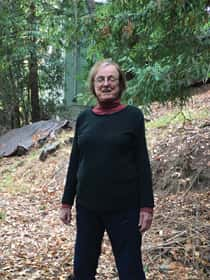 “It’s clearly an aquatic habitat,” says Barbara Salzman, president of the Marin Audubon Society, who explains that the organization’s focus is on wildlife and habitat preservation, and the principal goal is to protect the environment for birds by maintaining clear air and water. She points out that those are basic needs, and what’s good for animals and birds is beneficial for people, too. “We need to have a healthy lifestyle,” she says. “We don’t support filling wetlands.” Salzman points out that long-term results are a loss of habitat and reduced water quality as well as the increased risk of flooding. “Wetlands are critical in the bay’s ecosystem. They’re really the kidneys of the bay,” she says. “[Loss of wetlands] reduces the richness of what makes the Bay Area a really wonderful place to live.”
“It’s clearly an aquatic habitat,” says Barbara Salzman, president of the Marin Audubon Society, who explains that the organization’s focus is on wildlife and habitat preservation, and the principal goal is to protect the environment for birds by maintaining clear air and water. She points out that those are basic needs, and what’s good for animals and birds is beneficial for people, too. “We need to have a healthy lifestyle,” she says. “We don’t support filling wetlands.” Salzman points out that long-term results are a loss of habitat and reduced water quality as well as the increased risk of flooding. “Wetlands are critical in the bay’s ecosystem. They’re really the kidneys of the bay,” she says. “[Loss of wetlands] reduces the richness of what makes the Bay Area a really wonderful place to live.”
Economy counts
Dr. Robert Eyler, the Marin Economic Commission’s chief economist, finds that a lot of people equate development with something negative. But, he observes, opposition to all development is counterproductive. “The positions on housing are pretty polarized,” he says, adding, “One of the downsides is the myopia.” Eyler goes on to explain that a deteriorating property is going to have a negative impact on its surroundings.
He further points out that change is inevitable and advises, “Plan for it. Recognize that change is going to 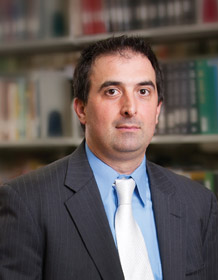 come.” He describes the resistance to change as “devolution instead of evolution,” and says that new development takes fallow land and creates a new source of revenue, while redevelopment takes a property and makes it better. The overarching idea is to expand business revenues, jobs and tax revenue; and whether a project is new or a redevelopment, it should result in some kind of property tax enhancement and perhaps a small amount of sales tax that can benefit the community. If it’s a hotel, it will also generate TOT (transient occupancy or hotel tax). Eyler believes that municipalities have to ask some serious questions and figure out the answers. “These problems are never going to go away,” he says.
come.” He describes the resistance to change as “devolution instead of evolution,” and says that new development takes fallow land and creates a new source of revenue, while redevelopment takes a property and makes it better. The overarching idea is to expand business revenues, jobs and tax revenue; and whether a project is new or a redevelopment, it should result in some kind of property tax enhancement and perhaps a small amount of sales tax that can benefit the community. If it’s a hotel, it will also generate TOT (transient occupancy or hotel tax). Eyler believes that municipalities have to ask some serious questions and figure out the answers. “These problems are never going to go away,” he says.
Development in Marin County isn’t easy, but when it’s done well, it tends to bring more benefits than problems. Rick Wells, CEO of the Marin Association of Builders, gives BioMarin’s campus expansion in downtown San Rafael as an example. “The challenges turned into a signification benefit to both the businesses and residents of San Rafael, as BioMarin is now an even greater contributor to our local economy,” he says, adding that well-planned, efficient and responsible development brings with it significant long-term economic and social benefits.
“It’s possible that having some kind of development in our backyard can actually be a benefit for our kids’ schools, our property values, available municipal services and our overall quality of life,” he points out, observing that it’s a matter of finding and maintaining a balance that considers the importance of economic, environmental and social concerns.
Up to bat
The city of Novato is currently reviewing plans for a project unique for Marin County that addresses some of those concerns. Hamilton Fields Sports and Community Park is an ambitious proposal to build multiple sports facilities on U.S. Army land at the former Hamilton Air Force Base in south Novato. Currently an overgrown expanse filled with pampas grass, blackberry brambles and concrete slabs from a former landfill, the land is designated recreational and is close to recently restored wetlands, a stretch of the San Francisco Bay Trail and housing built in the 1990s after the government deeded most of the former military post to the city.
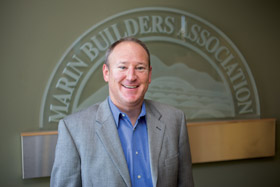 “It all started with Charles Scott,” says Michael Shapiro, a member of the Hamilton Fields development team as well as president and general manager of the San Rafael Pacifics, a professional baseball team based in Marin County. He explains that Scott, a Hamilton resident, is a former professional baseball player and scout who started a business called Future Prospects Baseball, which developed beyond his wildest dreams. Shapiro and Scott, who both had children on traveling sports teams, found that the growth of travel teams had led to parents spending a lot of time in other communities for their kids’ games (Marin doesn’t have enough fields, so it’s difficult to host tournaments). As the two men talked, “We thought, ‘Wouldn’t it be great if we built our own baseball academy?’” says Shapiro. The plan quickly progressed beyond baseball. “It started just being a baseball complex and grew,” he explains, adding that the plans also include soccer fields, bocce ball courts, a playground for young children and volleyball.
“It all started with Charles Scott,” says Michael Shapiro, a member of the Hamilton Fields development team as well as president and general manager of the San Rafael Pacifics, a professional baseball team based in Marin County. He explains that Scott, a Hamilton resident, is a former professional baseball player and scout who started a business called Future Prospects Baseball, which developed beyond his wildest dreams. Shapiro and Scott, who both had children on traveling sports teams, found that the growth of travel teams had led to parents spending a lot of time in other communities for their kids’ games (Marin doesn’t have enough fields, so it’s difficult to host tournaments). As the two men talked, “We thought, ‘Wouldn’t it be great if we built our own baseball academy?’” says Shapiro. The plan quickly progressed beyond baseball. “It started just being a baseball complex and grew,” he explains, adding that the plans also include soccer fields, bocce ball courts, a playground for young children and volleyball.
Shapiro and Scott enlisted Robert Mendelsohn, president of RHM Development in Kentfield, and his son Scott, a Hamilton resident with a background in both real estate development and sports, as well as Kurt Jensen, a businessman and sports dad. The group found the 55 acres at Hamilton Field and negotiated a use easement with the U.S. Army; they’ve been working for eight years on the project. “We were determined. We believed in this,” says Shapiro. “It’s more cause-based. We were looking at doing something good for youth in the community,” he adds, describing the proposed sports facility as “the quintessential public-private partnership.”
Among the economic benefits are jobs, such as coaches, umpires, concession-stand workers, 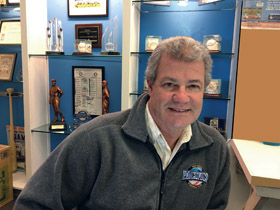 maintenance staff and groundskeepers, and “Layered on that is the infrastructure of administration,” says Shapiro. He anticipates hiring local teenagers for some positions, giving them, in many cases, their first jobs and real-life work experience. In addition, weekend tournaments will generate business for hotels, restaurants and stores. “Ancillary economic benefits are development-driven,” Shapiro observes. He adds that during the weekdays local youth and adult sports groups and that would largely use the park on the weekend tournaments would provide most of the revenue to support the public facilities so the community wouldn’t have any costs.
maintenance staff and groundskeepers, and “Layered on that is the infrastructure of administration,” says Shapiro. He anticipates hiring local teenagers for some positions, giving them, in many cases, their first jobs and real-life work experience. In addition, weekend tournaments will generate business for hotels, restaurants and stores. “Ancillary economic benefits are development-driven,” Shapiro observes. He adds that during the weekdays local youth and adult sports groups and that would largely use the park on the weekend tournaments would provide most of the revenue to support the public facilities so the community wouldn’t have any costs.
It’s a bright picture, but the neighbors have a different perspective and began holding meetings to discuss the proposal. “People living closest to it will have concerns,” says Community Development Director Bob Brown, citing lights and noise as possible issues, along with traffic and the impact on the wetlands restoration. He points out, though, that the area is designated for recreation and says, “For the Army property, the only use that’s allowed is recreational use.”
He also adds that, even though the U.S. Army owns the property, Novato has zoning control. A small part of the area in the proposal is designated as open space and would require a change to parkland, so the Novato City Council would have to modify the land-use map, and that isn’t guaranteed. Brown expects it will take two to three years to reach the final approval stage. “We’re very much in the analysis stage,” he says, explaining that the city is looking at its recreation needs, economic needs and the effect on local business, and will soon begin the preparation of an environmental impact report. It will also have specialists such as biologists and traffic engineers look at the impacts of the project. “It’s going to be a slow, transparent, iterative process,” he says. “Ultimately, it’s going to be a city council decision.”
Meanwhile, Shapiro remains enthusiastic and says the EIR will address obvious concerns, such as traffic, noise and wetlands. SWA of Sausalito is the landscape architect, and “Thanks to SWA, the project does not impede on the wetlands,” he says. He reports that the estimated number of people using the facilities is based on attendance assumptions, such as the number of people at Little League games, and says, “We made a set of assumptions based on our knowledge of the industry and from all the weekend tournaments I attended over the years when my own kids were taking baseball lessons and playing travel ball.” He also believes traffic will be stretched out. “The nature of these parks is such that people come and go over the course of a day,” he says. “It’s not like you’re going to have all those people entering or exiting the park at the same time.”
He observes that the project draws two kinds of opponents. One group is open-minded, and they want to know more, so they might ask about legitimate issues like traffic, noise and lights. “We’ve engaged them in meaningful dialogue and have made many changes to the project based on the feedback they’ve given us. There are others, however, who are opposed to the idea of a sports and community park under any circumstances and unfortunately we haven’t been able to find any sort of compromise with them. They’re asking, ‘Will this be good for my neighborhood?’” he says. The other group is homeowners adjacent to the development, and “They like the idea of having nothing there,” he says. He points out, however, that it was disclosed to buyers the property was designated for recreational development when the houses were built. “I hope reasonable people will come together and see that this is a very, very good thing for the community,” he says. “I hope people will look at the plans and reserve judgment.”
Success stories
Despite the constant tug of war between developers and community interests, some projects do make it through the process relatively easily. One example is Mt. Burdell Place, 10 units of Habitat for Humanity housing in Novato and Brown attributes the development’s success to several factors. It’s close to downtown in a neighborhood that is already home to multifamily dwellings. Most of the residents are renters, not owners, and it’s in an older area, that hasn’t seen upgrades for 30 years, making the time right for redevelopment. Finally, the project is very sensitively designed to look like 10 small single-family homes.
Similarly Preserve at Marin, a seven-building luxury apartment complex on the east side of Corte Madera, moved forward without some of the challenges current projects face. Wolff believes that neighbors were more accepting because one of the buildings had fire damage, and the extensive renovation made over existing buildings rather than demolishing them to build new ones. He also points out that it went through the approval process before Tam Ridge Residences became an issue, receiving approval in 2012.
Thinking ahead
Different perspectives on land use will always exist, but “To a certain extent, the die is cast in Marin with respect to our basic land use patterns, due to a very forward-thinking general plan originating in the 1970s and the long-term political stability in adhering to its growth control strategy,” says Brian Crawford, director of Marin County’s Community Development Agency. Thus, the county is looking ahead to the future and ways to safeguard what’s already built. “On a global level, climate change is a huge challenge for us, and sea-level rise is the most obvious manifestation due to the amount of shoreline that borders Marin,” he says. He that the county is starting a big push into assessing future impacts from rising tides and developing solutions that will make sense for the communities affected.
He also identifies the need to preserve and create additional opportunities for lower income folks to stay and live in Marin, which evolved from a predominantly middle-class community into one of the highest-priced housing markets in the country. In addition, transportation is a major challenge, due to the cost and the environmental consequences of some solutions. “I don’t see a shortage of good ideas, although there’s room for debate on which solutions are most effective and well suited to Marin,” says Crawford.
He predicts the county will continue to embrace slow-growth and be a regional source of agriculture, recreation and open space. However, our Board of Supervisors is currently responding to the housing crisis occurring in Marin and elsewhere by holding a series of workshops to consider a full range of policy options for preserving and creating housing opportunities, particularly for our growing senior population, lower wage workers employed local businesses, and residents with special needs. “We’ve done a great job of protecting our natural resources,” he says. “One of the important questions that lies ahead of us is how we should continue to preserve the things that make Marin a unique place to live, work and play, while making meaningful progress toward maintaining and creating a diversity of housing opportunities, adapting to climate change and maintaining and improving our transportations systems.”
The big challenge for the people who make Marin home is to find ways for the county to make the most of its available space and grow without compromising the qualities that make it a desirable place to live. With competing players and strong opinions, it’s an ongoing dilemma, and only time will reveal how it all plays out.
Marin County snapshot
Population (est.) 260,750
Housing Units: 112,295
Households (2009-2013) 102,912
Persons per household (2009-20013) 2.39
Building Permits 390
Land in square miles, 2010 520.31
Persons per square mile, 2010 485.1
Source: Marin County QuickFacts from the U.S. Census Bureau, 2014
“Rebels with a Cause”
“Rebels with a Cause” is a documentary film about the movement to prevent urban development of the coastline and rural areas in western Marin County. In it, Gary Giacomini, a Marin County supervisor from 1972 to 1996, observes that the residents of West Marin liked their independence and initially opposed plans to create the Point Reyes National Seashore and block development. Family members living in the area pressured him to vote against the proposal, but he supported it anyway. “It was the hardest vote, but it was the right vote,” he says.
Other notable environmentalists who appear in the film are Huey Johnson of Mill Valley, who served as Secretary of Resources for California from 1978 to 1982 and is cofounder of the Trust for Public Land; Dr. Martin Griffin of Belvedere, founder of Audubon Canyon Ranch in Bolinas and author of Saving the Marin-Sonoma Coast; and Phyllis Faber, cofounder of the Marin Agricultural Land Trust.
Directed by Kenji Yamamoto and Nancy Kelly, the film runs 1 hour and 14 minutes and is available on DVD and through online streaming. Find out more and see a trailer at www.rebelsdocumentary.org.
On the Road
Mean travel time to work: 28 minutes
Transportation to work
Total: 121,354
Using car, van or truck: 92,516 (76.2 percent)
Drove alone: 80,967 (66.7 percent)
Carpooled: 11,549 (9.5 percent)
Public transportation: 10,054, (8.3 percent)
Bus: 7,427 (6.1 percent)
Ferry: 2,477 (2 percent)
Source: American Community Survey 2006-2010
Wide Open Spaces
The Marin County Open Space District manages 34 open space preserves, comprising approximately 18,500 acres.
The Marin Agricultural Land Trust (MALT) protects 76 family farms, preserving more than 47,000 acres of farmland for agricultural use in perpetuity and continues to save more.
The Marin Audubon Society purchased more than 1,000 acres of land in Marin County and transferred 208 acres to the Marin County Open Space District and 362 acres to the California Department of Fish & Game.
Affordable Housing Challenge
The lack of workforce housing presents a challenge in Marin County, because many people in essential jobs have to live elsewhere. Board of Supervisors President Katie Rice recalls that, when a local school district faced the prediction of a big storm last year, it had to cancel classes because children would be on campus, but teachers living outside the county might not be able to make it to school. Similarly, many nurses, police officers and firefighters will be unable to get to work if a disaster strikes. “It’s a good example of the Catch-22 we have,” says Rice, who’s also concerned about older people who’ve lived in Marin for a long time but are being priced out of the area.
“We need to focus, at a minimum, on preserving the affordable housing we have,” she says. “We need people who work here to be able to live here. We need to have a range of types of housing and a variety of price points. We need to be creative,” she adds. She identifies the problems as few vacancies and limited opportunities to build new housing and says, “We have to find out what we can do with our existing infrastructure. We need to provide workforce housing and housing for seniors. We need to support all members of our community.”
Hamilton Fields Sports Park—the numbers
The proposed Hamilton Fields Sports Park will occupy 55 acres and include:
• A12-acre community park with one youth baseball park, one youth multi-sport field, picnic areas, play elements and a dog park
• Four baseball fields
• 1,000-seat ballpark for high school and collegiate sports
• Two full-size multi-sports fields
• A 50,000-foot training center
• Hamilton Wetlands Restoration Project interpretive pavilion
• Trail system and potential bike paths
Source: Hamilton Fields Sports Park
Water
Marin Municipal Water District (MMWD) supplies water to Central and Southern Marin and issues permits to new developments. “We project 40 years out what our supplies are going to be,” says Michael Ban, P.E., Environmental and Engineering Services Manager for the agency. “We have very strict requirements for development applications. We review landscaping plans to make sure they meet our requirements,” he explains.
Currently, “Our demand is well below what we’re projecting,” he says, and in the area MMWD serves, no large subdivisions are in development, so he doesn’t believe growth is a major factor affecting water supplies.
Making of a town
Marin County residents have a record of resisting development, and Tiburon, at the southern tip of Marin County, is an early example. Originally Miwok land and then part of Reed Ranch, a Mexican land grant, the town grew up as a railroad and dairy farming community in an unincorporated area, and the county had big plans for it in the years of growth and expansion following World War II. Marin planners created a Tiburon Peninsula Master Plan in the 1950s, which, in effect, became the town’s zoning ordinance. Among the elements were high-density housing for a projected population of more than 50,000, a shopping center on Ring Mountain and two four-lane highways the length of the peninsula—one along the shoreline and another along the Tiburon Ridge—leading to a bridge with spans from Tiburon to Angel Island and Angel Island to San Francisco.
Some residents, however, had a different vision for the town. “The 1956 Master Plan was the key,” says Branwell Fanning, former town historian and the only surviving member of the Tiburon Coordinating Council, the group that successfully fought to make Tiburon a town and turn back development. The council’s members wanted to preserve the small-town character and believed the best strategy was to make Tiburon a town in its own right, with the power to control growth and guide development as it found fit. A vote for incorporation won at the polling stations, and on June 23, 1964, Tiburon officially became a town with the late Gordon Strawbridge taking the oath of office as first mayor.
Some development eventually went forward, but in a way that was more acceptable to residents. Among the changes, the area that was once a rail yard now houses condominiums and a park; the bayside route trains once took became a multi-use path; and newly renovated schools occupy lands where cattle once grazed. Residents continue to prize open space, and in the 1990s, they passed two bond measures to purchase a pair of properties zoned for development and create Old St. Hilary’s Open Space Preserve.


